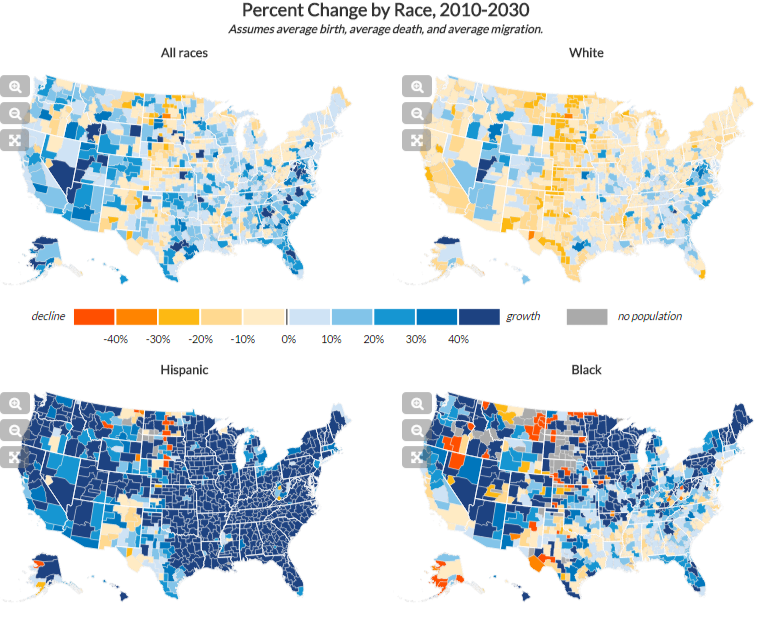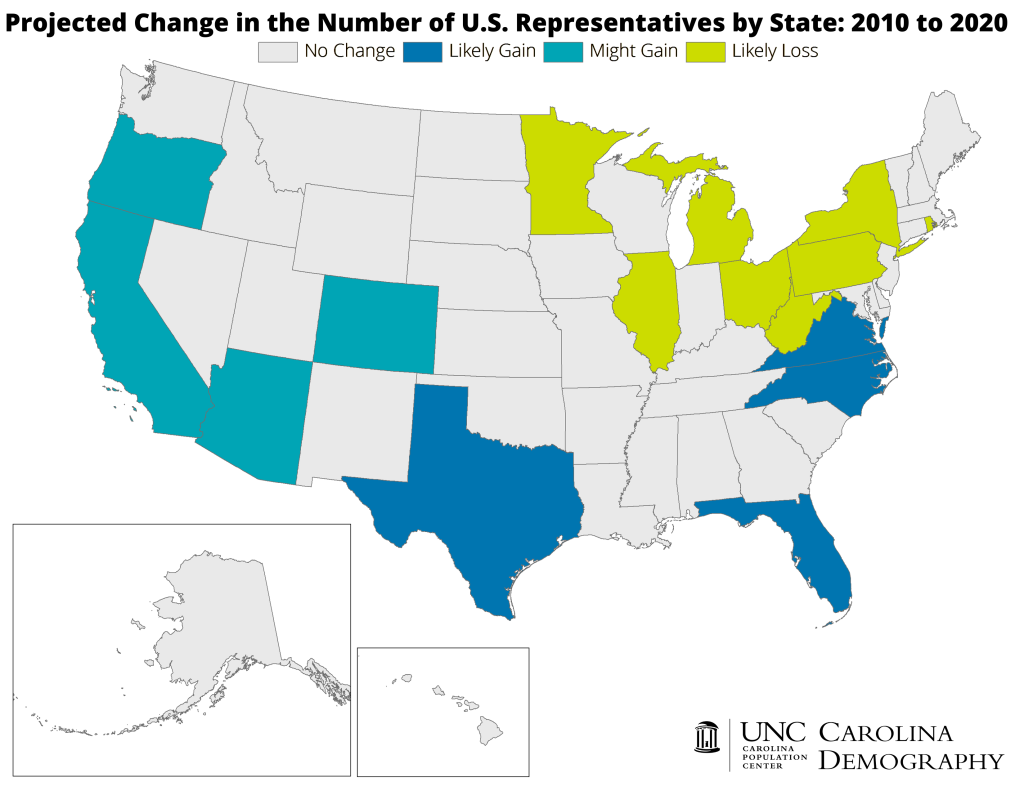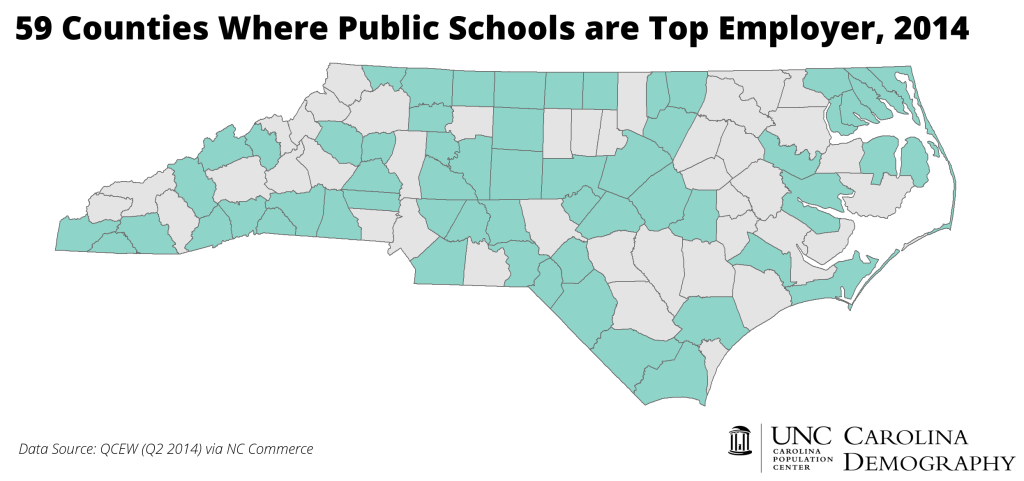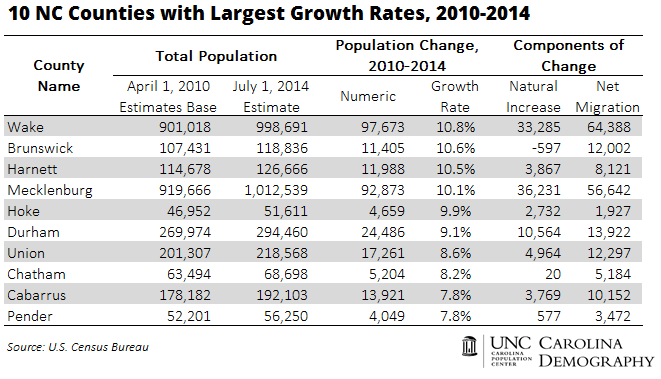The 5 most popular posts we published this year:
- What will your city be like in 15 years?
With a recently released interactive from the Urban Institute, users can toggle assumptions about key demographic factors–births, deaths, and migration–to see how this might impact their area. Across the state, the continued impact of population aging and rising diversity will be felt through 2030, regardless of the assumptions underlying the projections. And, as the authors of the study point out, it is important to keep in mind that demography is not destiny. Local actions and policies can and will shape the demographic landscape of the state.

- 2020 Reapportionment Will Shift Political Power South and West
The 2020 Census will determine the apportionment of seats in the U.S. House of Representatives among the 50 states for the following decade, 2021-2031. Continued shifts in population between national regions and varying growth patterns across states will lead to more seat shifts in 2020. In 2010, North Carolina narrowly missed picking up another House seat. How many House seats is North Carolina likely to obtain in 2020? How might the seats of other states shift?
 NC in Focus: Top Employer by County, 2014 (Q2)
NC in Focus: Top Employer by County, 2014 (Q2)
Across the state, public school systems are frequently the largest employer. Public schools were the largest employer in 59 of the state’s counties. These include districts with well over 1,000 employees (e.g., Wake, Johnston, and Franklin counties) to those with between 100-249 employees (Clay, Tyrrell, and Yancey).

- Ten U.S. Cities Now Have 1 Million or More Residents
Ten cities have passed the million population mark according to the U.S. Census Bureau’s 2014 municipal population estimates. With San Jose entering these ranks, California now has three cities with a million or more residents (Los Angeles, San Diego, and San Jose), tying Texas (Houston, San Antonio, and Dallas).
- What you need to know about the 2014 population estimates
North Carolina’s population has grown by more than 408,000 new residents since the 2010 Census. Of these, 95,000 were added between July 1, 2013 and July 1, 2014. New county population estimates from the U.S. Census Bureau highlight how counties and metropolitan areas changed over this same time period.

And 3 posts from before 2015 that remain popular with readers:

 NC in Focus: Top Employer by County, 2014 (Q2)
NC in Focus: Top Employer by County, 2014 (Q2)
